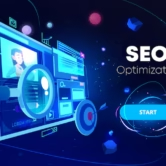- Your cart is empty Browse Shop
In the competitive world of online shopping, simply launching an ecommerce store isn’t enough. If potential customers can’t find your products on search engines like Google, your business will struggle to grow. That’s where Ecommerce SEO comes into play.
This beginner-friendly guide explains what Ecommerce SEO is, why it’s important, how it works, and how you can optimize your online store to rank higher and drive sales.
What is Ecommerce SEO?
Ecommerce SEO (Search Engine Optimization) is the process of optimizing an online store so that it appears higher in search engine results pages (SERPs) for relevant keywords. The goal is to drive organic (non-paid) traffic to your product and category pages, helping shoppers find your store when they search for products you sell.
Instead of relying solely on paid ads, Ecommerce SEO brings long-term visibility and consistent traffic that increases your chances of converting visitors into customers.
Why is Ecommerce SEO Important?
Here’s why every ecommerce business should prioritize SEO:
- Increased Visibility: Ranking on the first page of Google dramatically increases clicks.
- Cost-Effective: Organic traffic is free and sustainable compared to paid campaigns.
- Higher Sales Potential: Shoppers searching for specific products often have strong purchase intent.
- Trust and Credibility: Appearing in organic results builds brand authority and customer trust.
- Improved User Experience: SEO improves website navigation, speed, and usability, leading to better conversion rates.
How Does Ecommerce SEO Work?
Ecommerce SEO involves optimizing multiple elements of your website to align with search engine algorithms and user behavior. These include:
1. Keyword Research
Identify the search terms potential customers use to find your products. For example:
- “buy Bluetooth headphones online”
- “best winter jackets for men”
Use tools like:
- Google Keyword Planner
- Ahrefs / SEMrush
- Ubersuggest
- Google Search Console
Target keywords with high search volume and low competition relevant to your niche.
2. On-Page Optimization
Ensure every product and category page is properly optimized:
- Title Tags & Meta Descriptions: Use target keywords naturally.
- URL Structure: Keep URLs short and keyword-rich (e.g.,
/mens-running-shoes). - Headings (H1, H2, H3): Include keywords in headings.
- Product Descriptions: Write unique, detailed descriptions instead of copying manufacturer content.
- Image Alt Text: Helps in image SEO and accessibility.
- Internal Linking: Link to related products or categories for better navigation and crawlability.
3. Technical SEO
Technical SEO ensures search engines can efficiently crawl and index your website. Focus on:
- Site Speed: Compress images, use caching, and optimize code.
- Mobile-Friendliness: Ensure your store works perfectly on all devices.
- Secure HTTPS Connection: Build trust and improve rankings.
- XML Sitemap: Submit to Google Search Console.
- Canonical Tags: Prevent duplicate content issues on product variations.
4. Content Marketing for Ecommerce
Publishing helpful, keyword-targeted content attracts more visitors and builds authority. Ideas include:
- Product buying guides
- How-to blogs
- Seasonal gift guides
- Product comparison articles
Example: A fashion ecommerce store could write: “Top 10 Office Outfits for Summer 2025.”
5. Link Building
Earn backlinks from authoritative websites to improve your domain strength:
- Reach out to bloggers for product reviews
- Publish guest posts on niche-related blogs
- Get listed in ecommerce directories
- Share valuable content on social media and forums
6. Local SEO (If Applicable)
If you have a physical location:
- Set up and optimize your Google Business Profile
- Get local citations (business listings with consistent NAP info)
- Encourage happy customers to leave Google reviews
Ecommerce SEO Best Practices
Follow these proven tips to maximize your SEO results:
✅ Use Clean Site Architecture: Keep category and product pages no more than 3 clicks from the homepage.
✅ Avoid Duplicate Content: Especially common with product variations – use canonical tags or consolidate.
✅ Create User-Friendly Navigation: Simplifies browsing and improves UX.
✅ Enable Search Filters Carefully: Avoid creating duplicate or thin content pages.
✅ Use Structured Data Markup (Schema): Helps search engines understand your product pages and enhances rich snippets (e.g., reviews, price, availability).
✅ Track Performance: Use Google Analytics and Google Search Console to monitor traffic, clicks, and issues.
Common Ecommerce SEO Mistakes to Avoid
Even experienced store owners fall into these traps:
- ❌ Using manufacturer descriptions or duplicate content
- ❌ Ignoring image SEO
- ❌ Creating keyword-stuffed or vague product titles
- ❌ Neglecting technical site issues like 404 errors or broken links
- ❌ Forgetting to optimize for mobile users
- ❌ Not tracking SEO progress or goals
Ecommerce SEO Tools to Help You Get Started
You don’t need to do everything manually. These tools can speed up your SEO efforts:
- Google Search Console – Monitor index status and fix errors
- Google Analytics 4 – Understand user behavior and conversion paths
- Screaming Frog – Audit your website for SEO issues
- Ahrefs / SEMrush – Perform keyword and backlink research
- Yoast SEO (WordPress) – Optimize product pages easily
- PageSpeed Insights – Analyze and improve load time
Conclusion
Ecommerce SEO is not a quick fix — it’s a long-term growth strategy that pays off when done right. By optimizing your store for search engines and users, you not only attract more qualified traffic but also improve your chances of converting that traffic into loyal customers.
Whether you’re just starting your online store or looking to scale, investing in Ecommerce SEO can help you compete, grow, and succeed in the digital marketplace.
🚀 Ready to take your website to the top of search engine results?
Let the experts at Cichlid Digital craft a results-driven SEO strategy tailored to your business goals.
📧 Email: info@cichliddigital.com
📞 Phone: +91-8076465054
🌐 Visit Us: www.cichliddigital.com
👉 Contact us today for a free SEO consultation! We’re here to help you grow — organically and sustainably.




